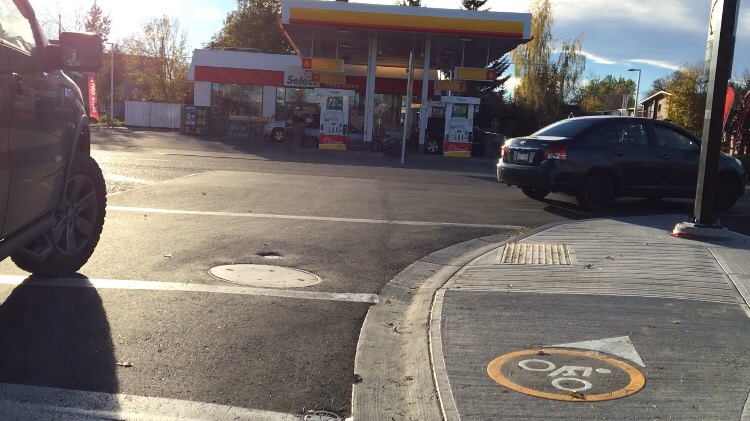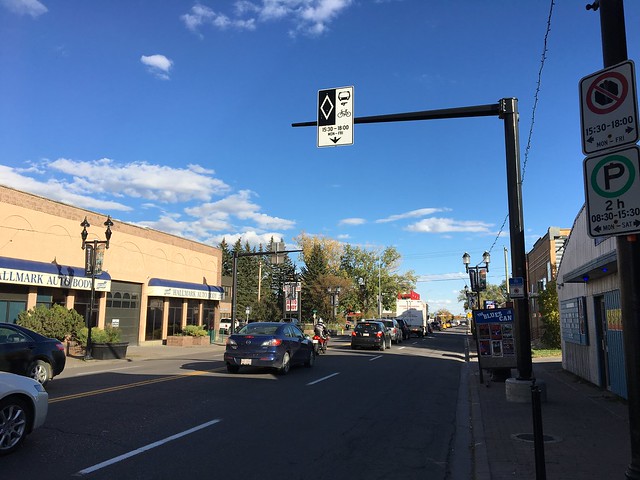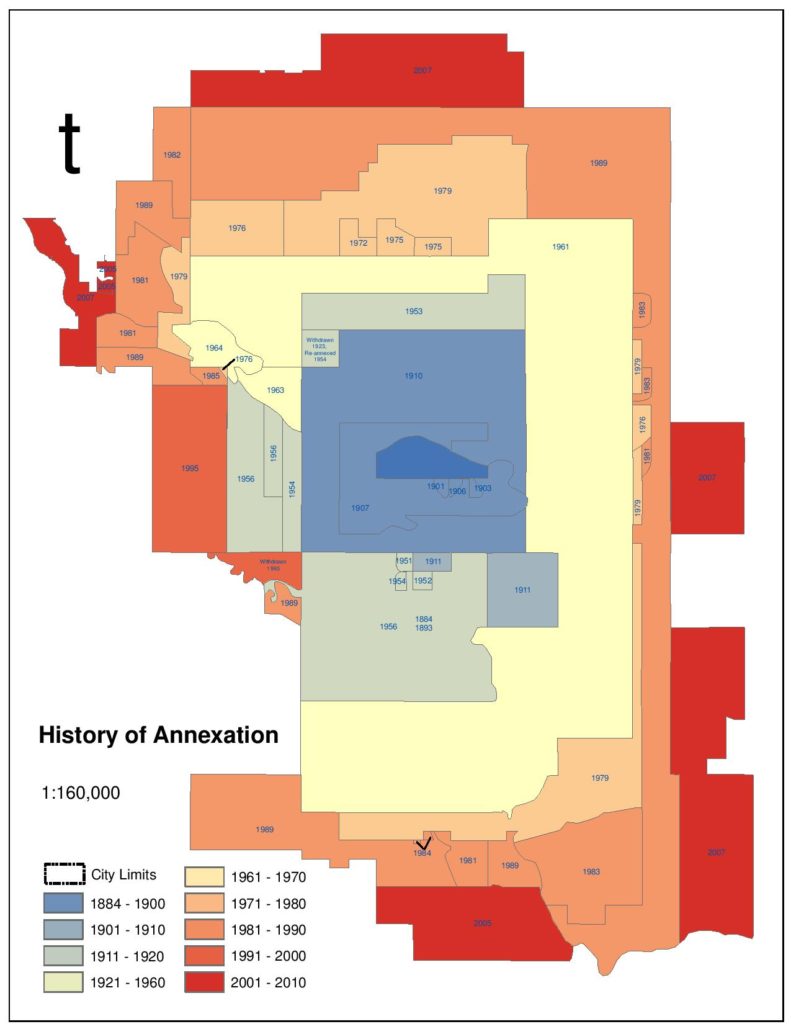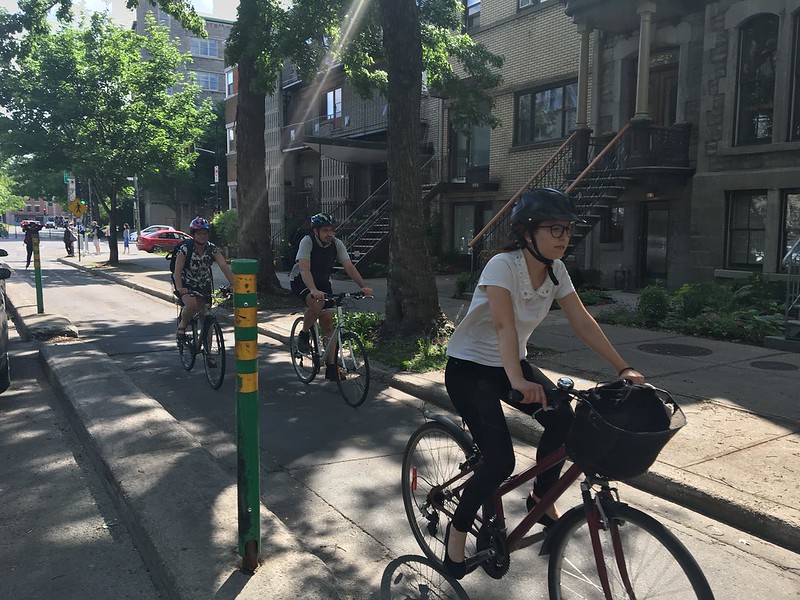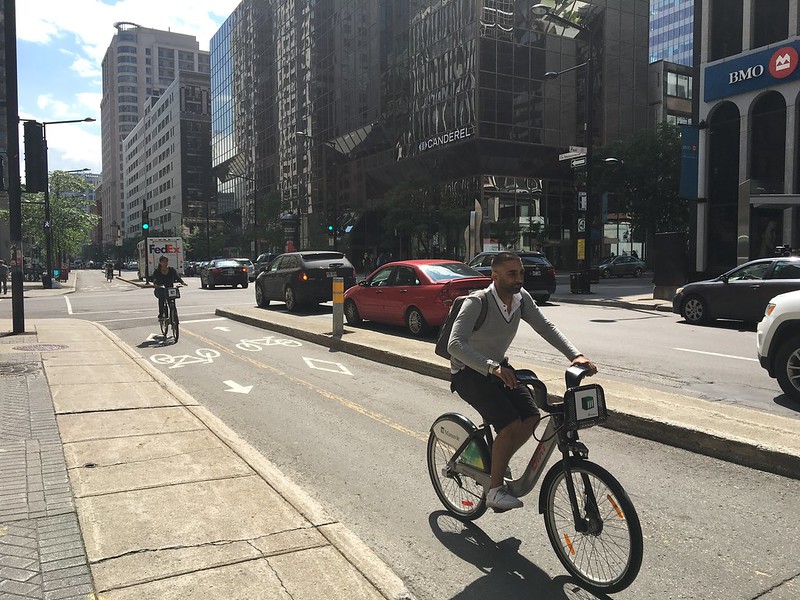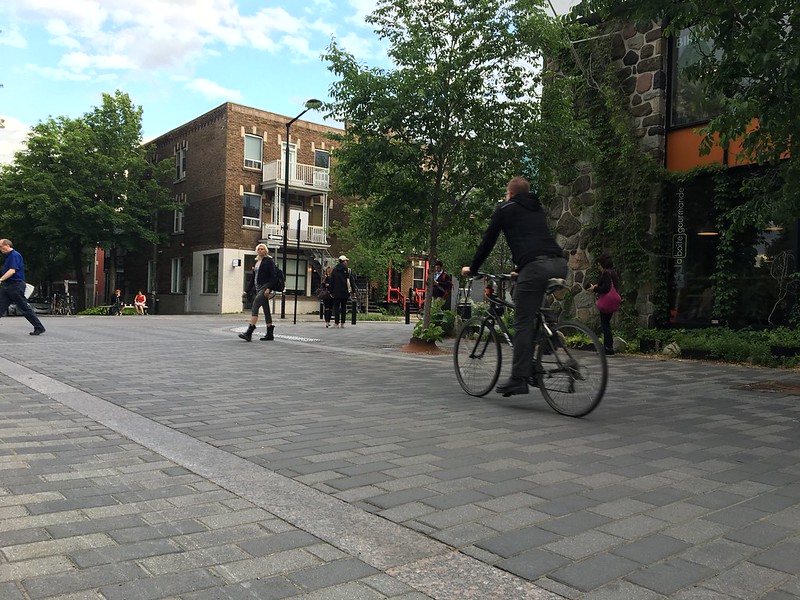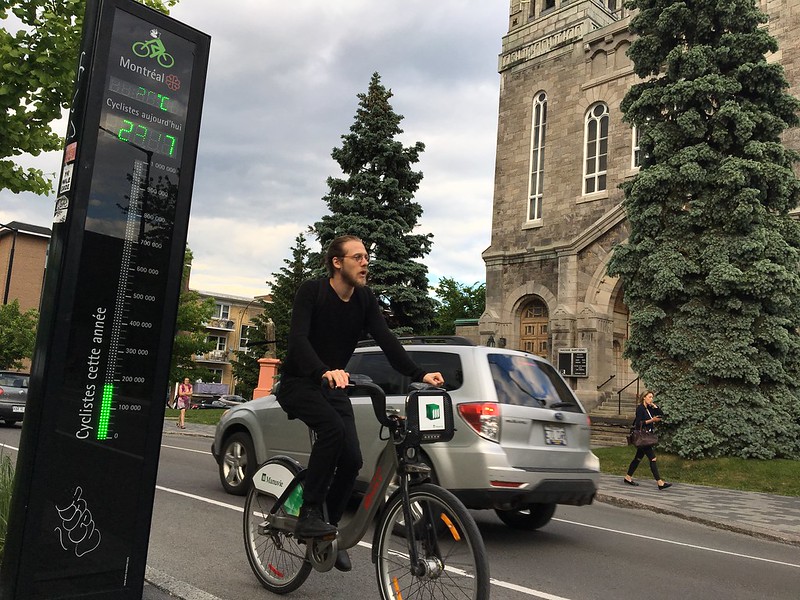Less than three months ago, everyone sounded ready to give up on making the Canadian city of Edmonton more friendly to cyclists. Even the city’s bike loving mayor.
In July, Don Iveson, who was elected in 2013 as a young, forward-thinking, bike-riding urbanite, gave an interview to the Globe and Mail in which he basically joined the chorus of frustrated cyclists lamenting the sorry state of cycling in the capital city of Alberta. “Of all the things we’re doing, this is the one where I have the most disappointment,” Iveson told the Globe. “I agree with the folks who say that the city is way behind.”
That’s an understatement. Not only had Edmonton sat idly by while cities all over the continent built accommodations for bikes, it was getting worse. Painted lanes were being scrubbed, and the best bike route across the river was worsened by bridge modifications. If the mayor sounded like he was throwing up his hands, what hope did anybody else have?
So how it is that, just a few weeks later, this sprawling northern city, famous for long winters and hockey, is on pace to build a forward-thinking and ambitious network of separated downtown bike lanes? Credit the power of frustration, and some creative thinking.
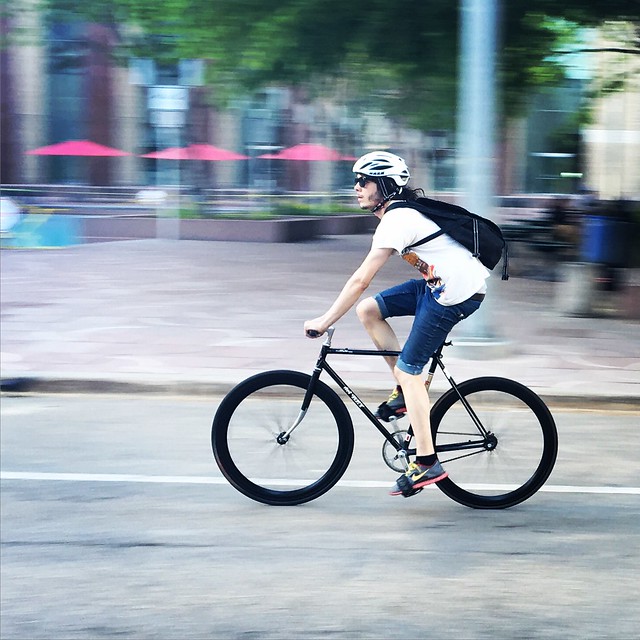 Cyclists in Edmonton have had little to celebrate in recent years. Photo by Tom Babin.
Cyclists in Edmonton have had little to celebrate in recent years. Photo by Tom Babin.
Iveson wasn’t the only one grinding his teeth over the city’s backsliding during the summer. The city’s bike advocates were seething. Among those was the group Paths for People, and its chairperson, Conrad Nobert.
After much discussion about how to remedy the situation, Nobert’s group and its allies came up with an idea to start planning for a downtown bike network themselves. They convinced engineering firm Stantec to donate planning time, and, satisfied with the results, they arranged a meeting with some top civic bureaucrats. They went into the meeting confidently, thinking they had completed all the hard work so it would be difficult to turn down the idea.
They turned down the idea. Instead, those city managers said they were going ahead with their own plan to consult the public about their appetite for bike lanes that would take at least two years.
“I was fuming,” Nobert told me. But they had one last idea. The group took the report to some bike-friendly city councillors, who came up with a creative idea: they would simply raise a motion to have the city pay for part of the Stantec report. That got the ball rolling and, within a matter of weeks, city council had approved, not just payment of the report, but implementation of the report’s plans itself — a $7.5-million grid of 7.1 kilometres of downtown separated bike lanes.
An entire network of separated downtown lanes, built all at once: It was a stunning reversal for a city that was becoming famous for bungling the simplest of bike lanes.
It also has lessons for other cities struggling to get the bike-lane ball rolling. Nobert credits the idea to creative thinking outside of the usual confines of city hall. “We created a situation that seemed impossible or difficult to say no to,” he said. “I credit (a group of city councillors) with showing the leadership and take the political risk, but I believe that the creativity came from without.”
There’s something else unique about the project. Rather than a long public consultation process, in which a litany of public meetings allow people to air their theoretical grievances ahead of time, this project is being built as a pilot project that will be tweaked once in place. The idea is to get the lanes installed in the real world, and then adjust them based on public feedback, rather than the other way around.
It’s an interesting approach that comes with some risk — especially considering the bike lanes are going in all at once, rather than one at a time as in most cities — but it also has benefits, not least of which is that it will get people riding more quickly. In the end, the way city planners react to feedback may be as important as the feedback itself.
For Nobert, however, perhaps the most important thing that he learned from the experience is the power of people.
“Citizens need to get engaged,” he said. “Trust that centrally-located residents want to bike and walk places (they do), and use that fact to your advantage. Guerilla is great. Use injury collision data as leverage. Build social media networks, build real relationships. Meet with everyone.
“Citizen groups can make change.”



